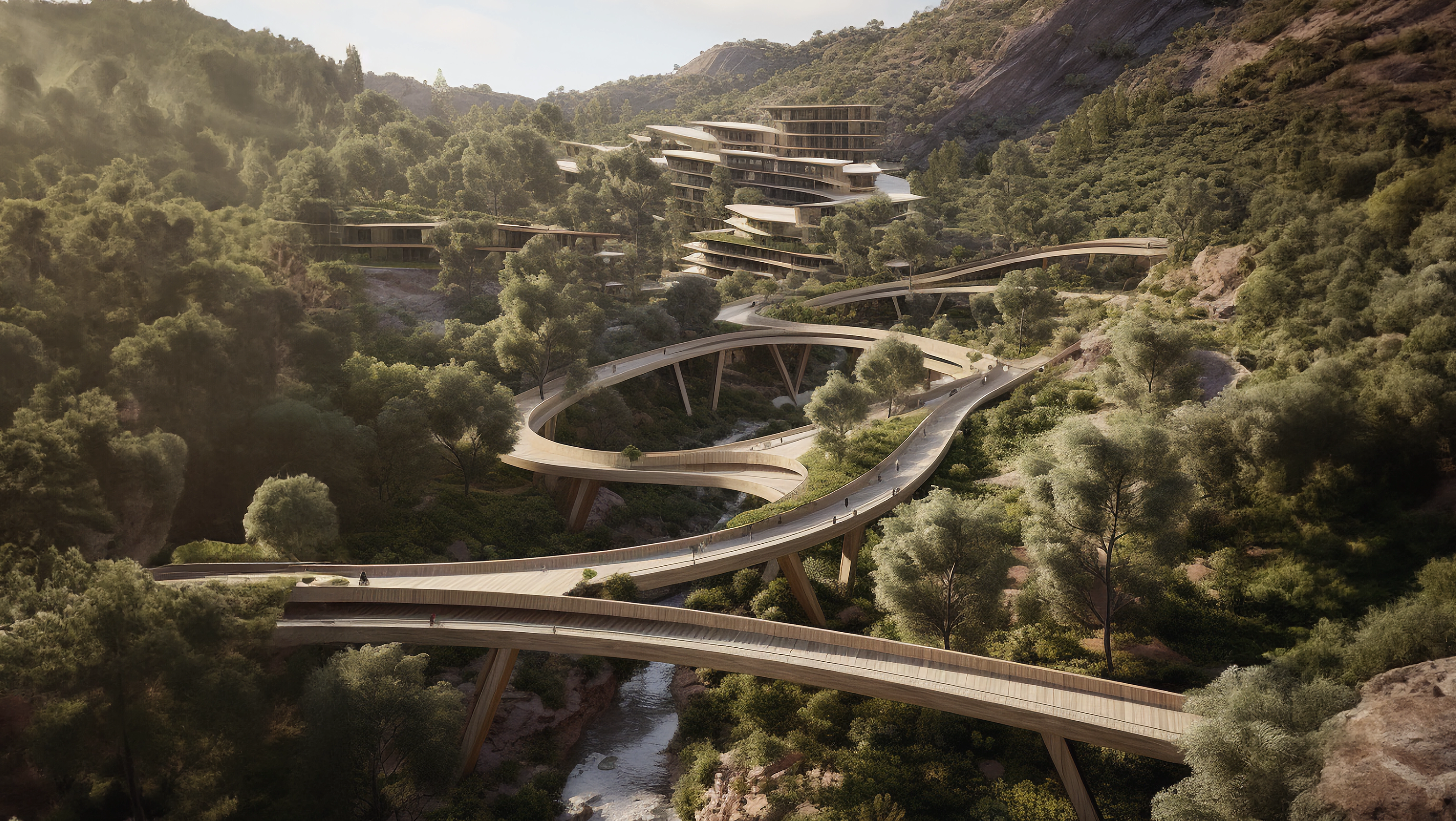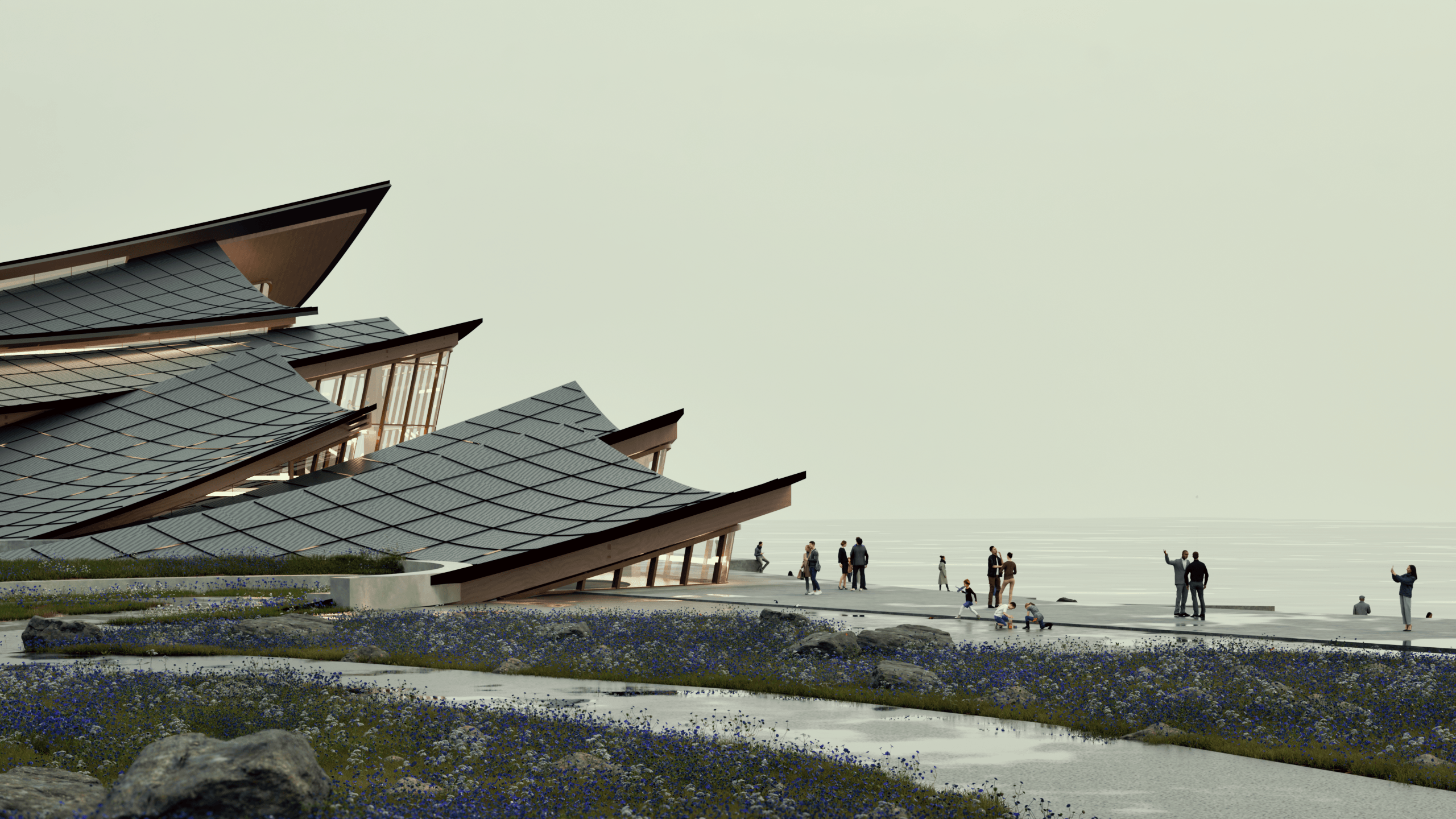The museum’s design embodies a series of dichotomies: cold, stark interiors contrast with warm, inviting exteriors, while raw, unrefined forms interplay with intricately crafted facades.
Our design challenges the traditional role of a museum, merging it seamlessly with the city’s fabric through innovative uses of exterior and interior spaces.
Rooted in the cultural essence of Finland, the design reflects local traditions while drawing from the diverse perspectives of our multicultural team. This fusion creates a compelling narrative that positions the museum as a new cultural landmark for Helsinki.
The concept emerges as a dialogue of contrasts — cold, icy interiors enveloped by a warm, woven exterior. This duality symbolizes the museum’s dynamic and evolving character, resonating visually and metaphorically.
Our design is inspired by quintessential elements of Finnish culture, including abstract interpretations of traditional fabrics, woven baskets, and the fluidity of fish swimming in schools.
This "fast-paced" approach mirrors the flow of life near water, where the museum is located, and celebrates the interplay of motion and stillness inherent in Finnish landscapes.
The façade, composed of approximately 20,000 pieces of recyclable wood, wraps around a glacial, iceberg-like core. From close up or afar, it appears in perpetual motion, creating a bold and dynamic presence that speaks to Helsinki’s innovative spirit.
Sustainability anchors every aspect of the design. Guided by LEED Platinum standards and shaped through collaboration with European historians and environmental experts, the project prioritizes minimal environmental impact while maximizing performance.
This duality creates a structure that is both resilient and adaptable, reflecting the evolving needs of its urban and environmental context.
Insights from local Finnish team members grounded the project in historical, cultural, and environmental contexts, while the diversity of the global team ensured bold, innovative ideas.
The design process was enriched by the collaboration of an international team spanning New York, Hong Kong, Tokyo, Vienna, Rio de Janeiro, Brasília, Los Angeles, Helsinki, and Rome.
The museum is designed to balance adaptability with resilience, addressing the question: how should structures respond to human behavior and environmental challenges?
The Helsinki Design Museum redefines how cultural institutions integrate with their urban environments. By blurring boundaries between public and private, and reimagining a museum’s role, this project establishes a dynamic, sustainable landmark that reflects the evolving identity of Helsinki. It stands as a bold statement in sustainable urban design, paving the way for future innovations.
Team: Andreas Palfinger, Ana Cyano, Nele Herrmann, Aryaman Garg, Felix Wong, Riccardo Rivano, Luan Fontes, Henrique Liborio, and Rodrigo Brandão.





